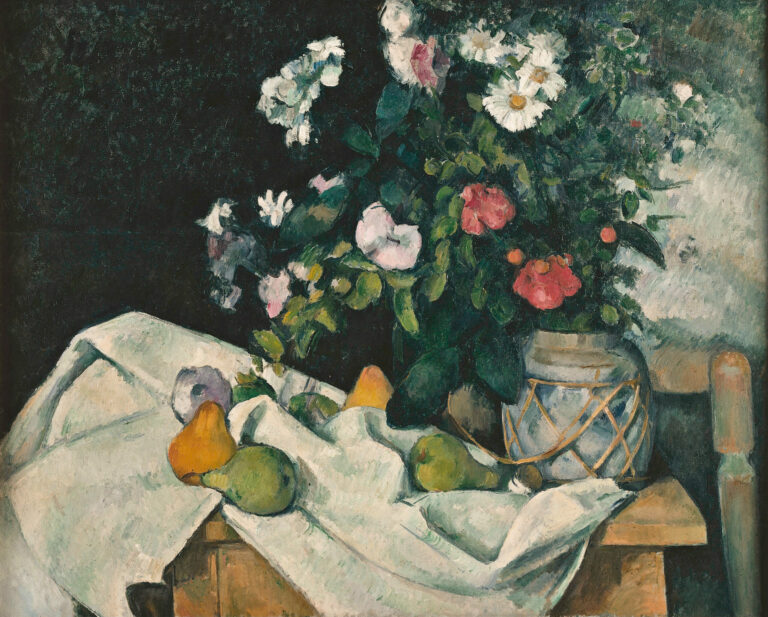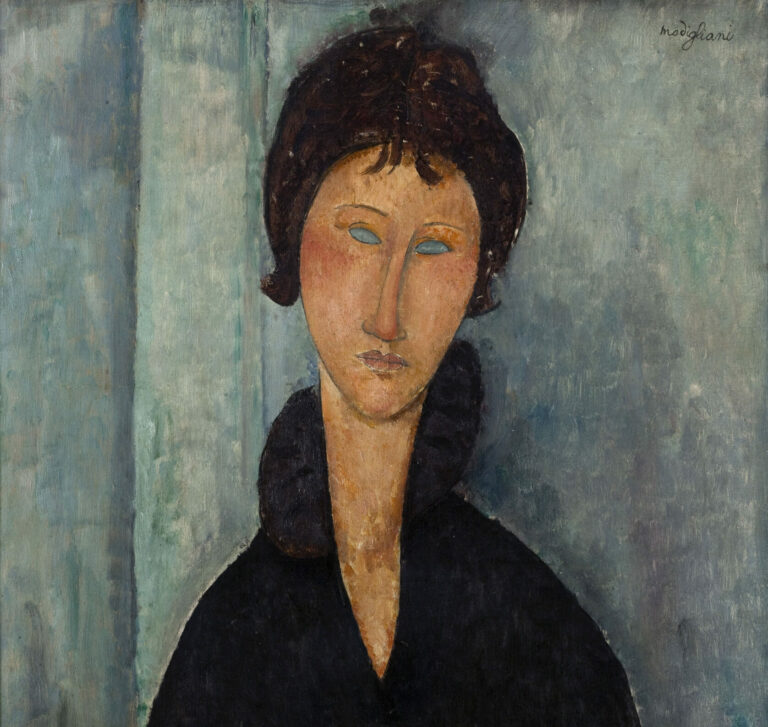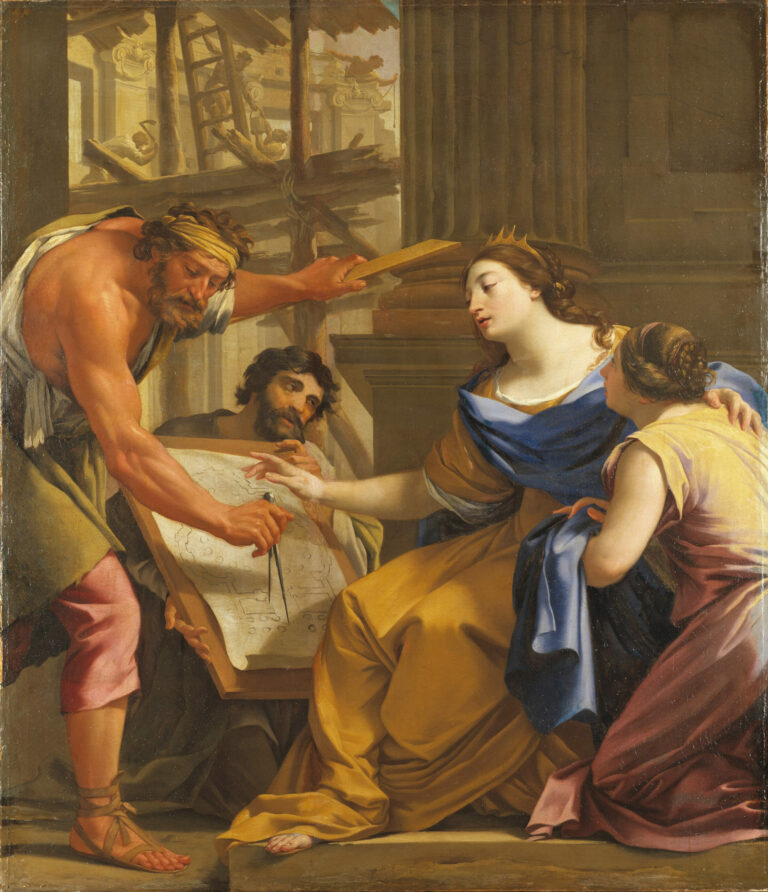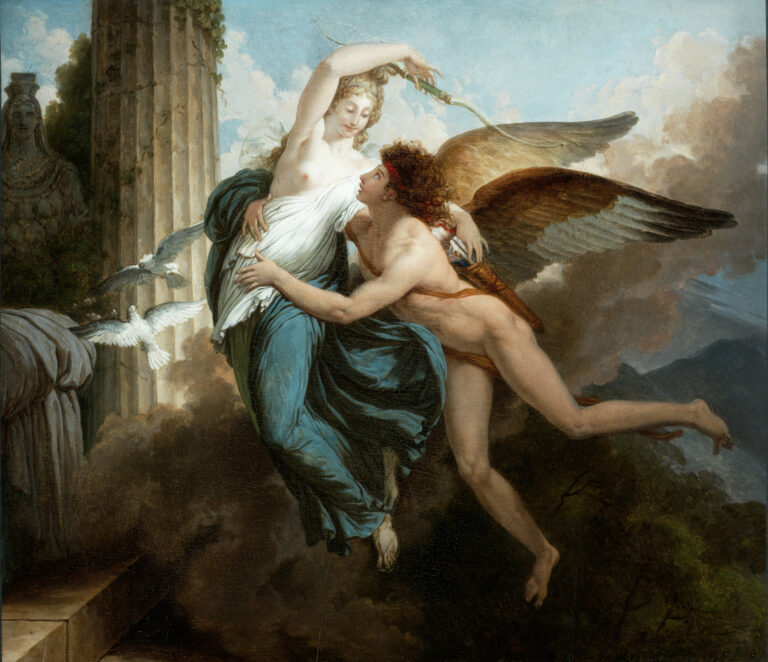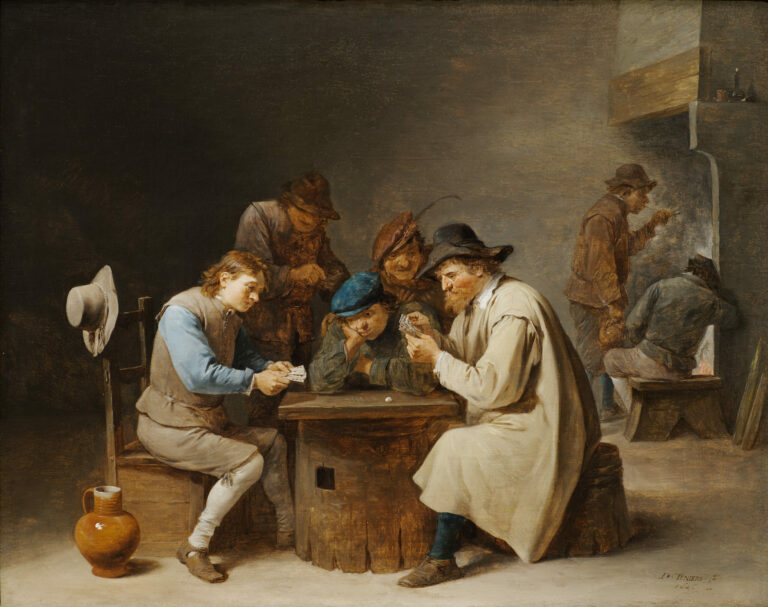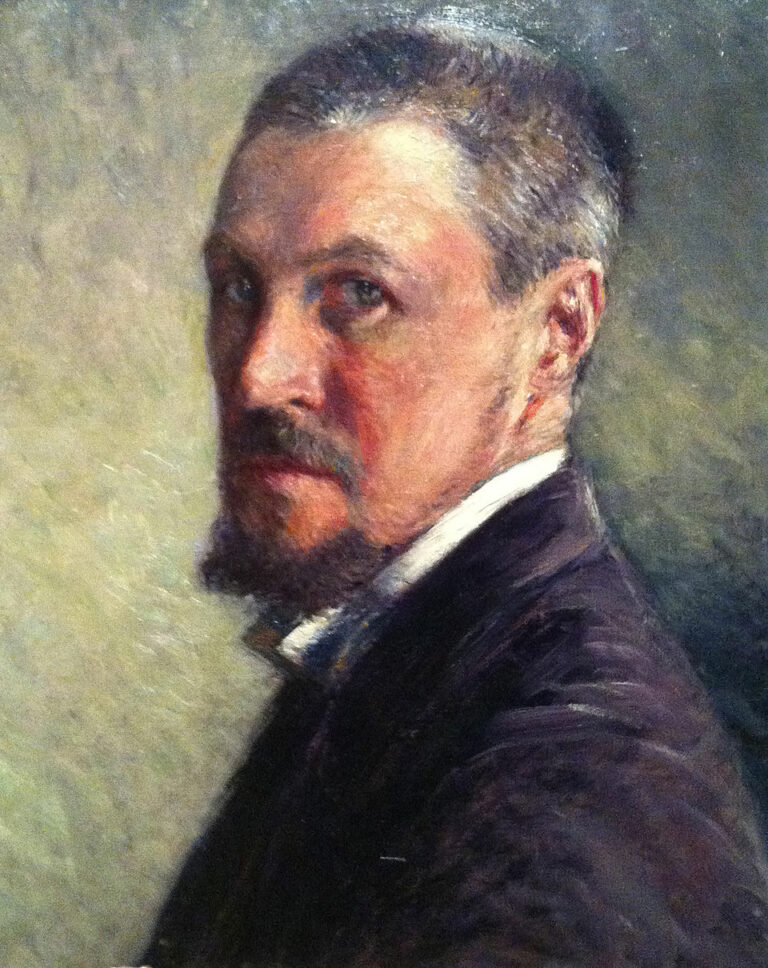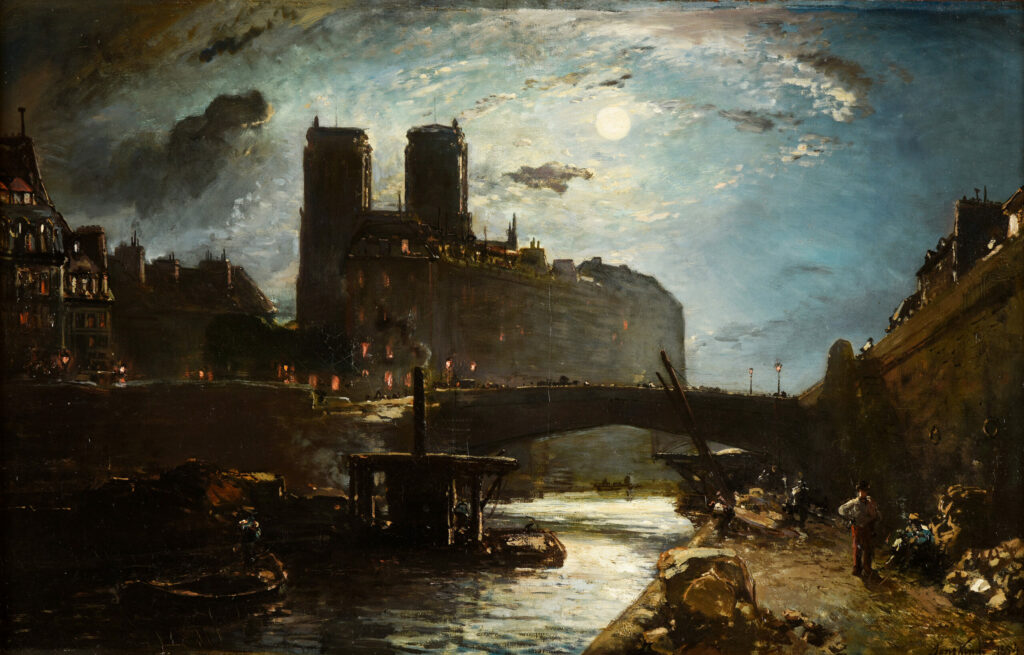
This view of Notre-Dame de Paris by Jongkind in 1854 demonstrates a new approach to urban landscape, heralding impressionist aesthetics.
The Dutch artist captures the cathedral in twilight light, where the moon pierces through a cloud-laden sky. The Seine reflects the light, creating a play of subtle reflections that reveals Jongkind’s technical mastery. The towers of Notre-Dame rise majestically at the center of the composition, but the artist refuses traditional romantic idealization. He favors a modern vision of Paris in transformation, integrating port activities that humanize the historic monument. The free brushwork and expressive impasto reflect direct observation. This work perfectly illustrates the transition between late romanticism and pictorial modernity, where topographical accuracy gives way to the artist’s personal interpretation.
Further information
- Johann-Barthold Jongkind, Notre-Dame de Paris, 1854, Reims, Musée des Beaux-Arts (inv. 907.19.260), Photo: © Christian Devleeschauwer
- 47 x 73.5 cm, oil on canvas
- https://musees-reims.fr/oeuvre/notre-dame-de-paris
Johann-Barthold Jongkind (1819-1891), Dutch landscape painter, revolutionized plein air painting and profoundly influenced the French impressionist school. Born in Lattrop in Overijssel, he first trained at the Drawing Academy of The Hague under Andreas Schelfhout. In 1846, thanks to a scholarship, he settled in Paris where he developed a revolutionary approach to landscape painting. His free technique broke with the academicism of the time. Permanently settled in France from 1860, he became a guiding figure for the younger generation of artists, notably Claude Monet who recognized him as his true master. A precursor of impressionism, Jongkind excelled in transcribing light effects and atmospheric variations. He profoundly marked French painting of the 19th century.

